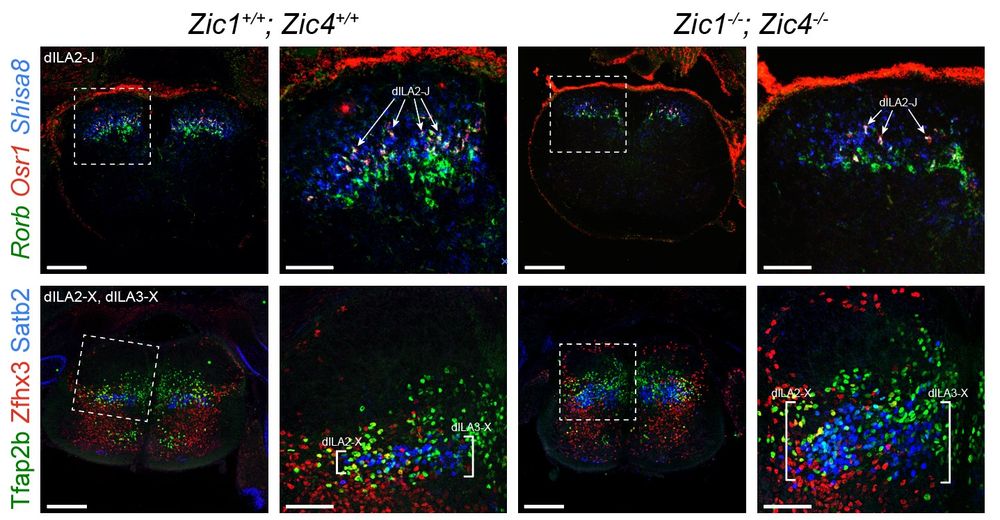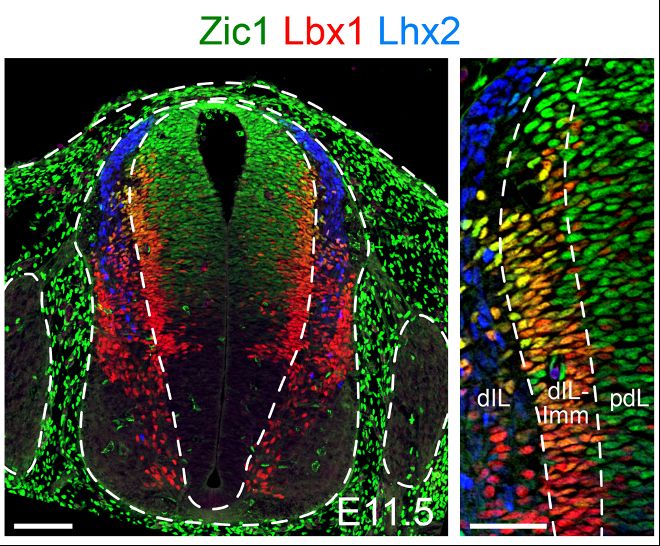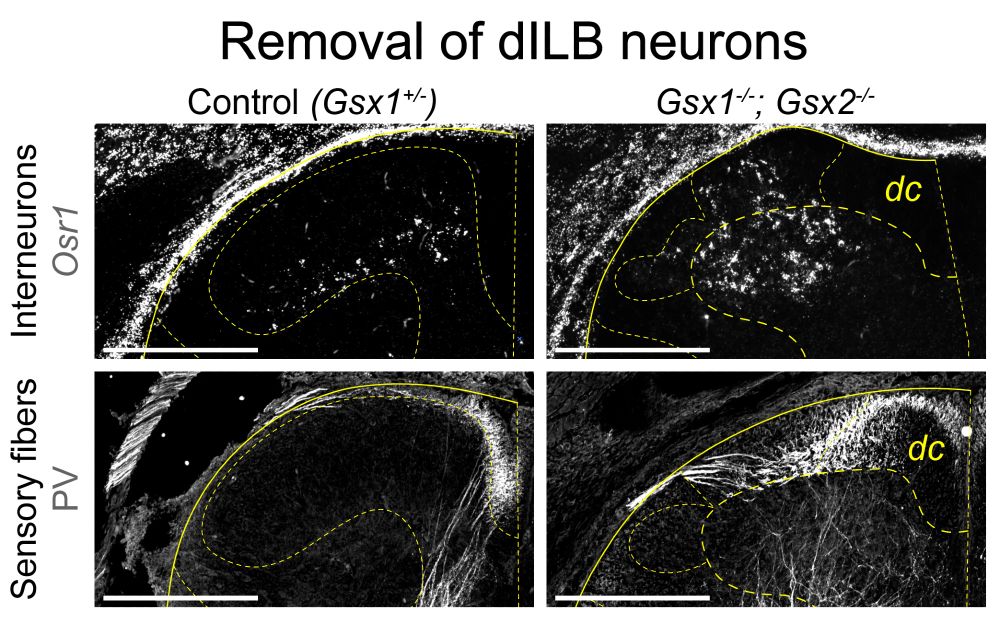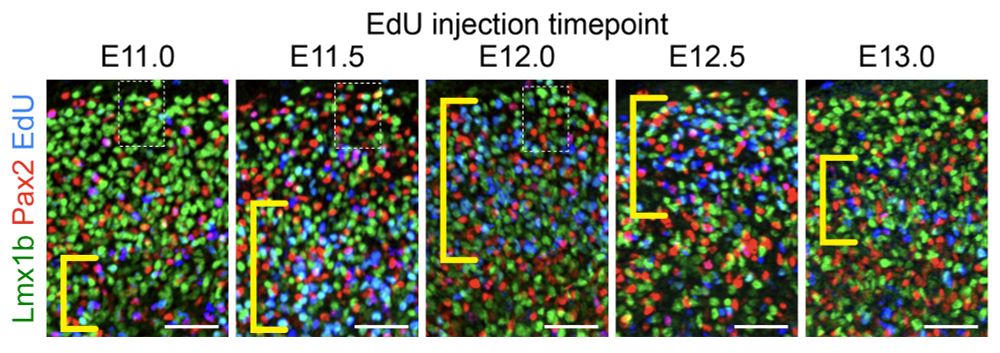R. Brian Roome
@rbrianroome.bsky.social
Research associate, Kania lab, IRCM. Investigating formation and function of spinal cord sensory and ascending circuits. Avid balcony gardener and amateur musician. Views are my own.
With the two orthogonal factors – birth time and and a gradient of Zic genes – we are able to describe the mechanisms of cellular diversity and structure which come together to produce the dorsal horn! Message me and let’s start figuring out what this diversity means for spinal cord physiology! 7/7

March 17, 2025 at 4:23 PM
With the two orthogonal factors – birth time and and a gradient of Zic genes – we are able to describe the mechanisms of cellular diversity and structure which come together to produce the dorsal horn! Message me and let’s start figuring out what this diversity means for spinal cord physiology! 7/7
Inhibitory neurons from the same family vary by Zic expression: Rorb neurons express lots of Zic and Satb2 neurons express almost none, and this directs their laminar position. Loss of Zics = drop of Rorb, increase in Satb2 neurons, and so on for each family. 6/n

March 17, 2025 at 4:23 PM
Inhibitory neurons from the same family vary by Zic expression: Rorb neurons express lots of Zic and Satb2 neurons express almost none, and this directs their laminar position. Loss of Zics = drop of Rorb, increase in Satb2 neurons, and so on for each family. 6/n
Well, time isn’t everything! We find a progenitor gradient of the Zic genes which are imprinted onto dorsal horn neurons as they’re born. 5/n

March 17, 2025 at 4:21 PM
Well, time isn’t everything! We find a progenitor gradient of the Zic genes which are imprinted onto dorsal horn neurons as they’re born. 5/n
Excitatory neurons are particularly crucial – only when you lose excitatory neurons does laminar structure collapse.
Inhibitory neurons also are born in a sequence of families though – but not quite so neatly. Despite that, they are way more diverse. So what else is going on? 4/n
Inhibitory neurons also are born in a sequence of families though – but not quite so neatly. Despite that, they are way more diverse. So what else is going on? 4/n

March 17, 2025 at 4:20 PM
Excitatory neurons are particularly crucial – only when you lose excitatory neurons does laminar structure collapse.
Inhibitory neurons also are born in a sequence of families though – but not quite so neatly. Despite that, they are way more diverse. So what else is going on? 4/n
Inhibitory neurons also are born in a sequence of families though – but not quite so neatly. Despite that, they are way more diverse. So what else is going on? 4/n
By birthdating families of dorsal horn neurons, we show that the order excitatory neurons are born in is the order of their laminae! Here, time is structure! 3/n


March 17, 2025 at 4:19 PM
By birthdating families of dorsal horn neurons, we show that the order excitatory neurons are born in is the order of their laminae! Here, time is structure! 3/n
We show a new embryonic single-cell spinal cord atlas, hugely expanding the types of known neurons. We see the usual crowd, plus large families of dorsal excitatory (dILB) and inhibitory (dILA) neurons which match the families described postnatally. dILB3 = Grp family, dILA5 = Pdyn family, etc. 2/n

March 17, 2025 at 4:18 PM
We show a new embryonic single-cell spinal cord atlas, hugely expanding the types of known neurons. We see the usual crowd, plus large families of dorsal excitatory (dILB) and inhibitory (dILA) neurons which match the families described postnatally. dILB3 = Grp family, dILA5 = Pdyn family, etc. 2/n

